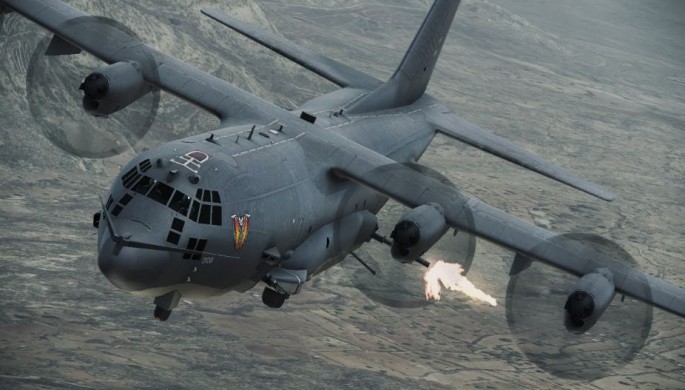The U.S. Air Force wants to deploy the most powerful laser cannon in the U.S. armed forces and plans to mount this formidable 200 kW weapon on its Lockheed AC-130W "Stinger II" gunships after field tests of this invisible "dollar-a-shot" weapon.
The Air Force plans to ask the U.S. Congress for $120 million to first fund a prototype solid-state 60 kW laser cannon. The Air Force can then scale-up this weapon to 150 kW and then 200 kW. A 200 kW laser cannon will be able to destroy surface-to-air and air-to-air missiles apart from armored vehicles on the ground. Because the laser beams are invisible to the naked eye, there is no way an enemy can tell the origin of the laser fire destroying his weapons and equipment.
Analysts said each of the four Rolls-Royce T56-A-15 engines powering an AC-130 generates 3.9 megawatts of power, more than enough to keep a 200 kW laser in action. They believe the technology is ready for the deployment of laser cannons on AC-130s.
The Air Force is already testing a 150 kW laser cannon mounted on a General Atomics MQ-1 Predator drone at the White Sands Missile Range in New Mexico. This special Predator has an uprated engine to generate the power needed to fire the laser cannon.
First user of the combat-ready 200 kW laser cannon will be the U.S. Air Force Special Operations Command (AFSOC), which will also be the first to test the military's first solid state laser mounted aboard a combat aircraft. The Air Force plans to have just three or four laser cannon-equipped AC-130Ws by 2020.
In addition, this "Whiskey" gunship that will test the laser cannon will also be transformed into an "aircraft carrier" to test the feasibility of launching in mid-flight the Coyote UAS (Unmanned Aerial System), an expendable, low cost drone used for tactical reconnaissance.
The laser cannon will occupy the 30 mm cannon position forward of the wing where airflow is less disturbed. AFSOC wants to either install a 60 kW or a 120 kW solid state laser to be used for knocking-out stationary vehicles, aircraft and fixed communications sites such as radio towers.






















